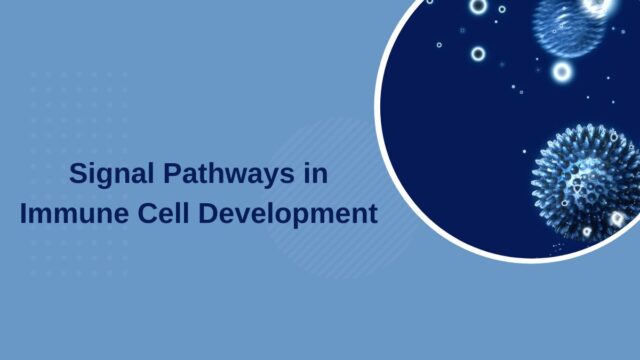Last Updated on March 9, 2024 by admin
The term ‘Signaling Pathway’ refers to the bunch of chemical reactions. A troop of molecules of a cell function in unity to monitor the cell functions like death of cells, dividing the cells, etc. The signal is given to the cell when a hormonal molecule or molecule related to growth ties up with any protein receptor of the cell.
Role of Signalling in Cancer
The primary cause of cancer is either the epigenetic or genetic alterations. But the advancement of the disease is a complicated interaction between the tumor cells, ECM and the adjacent neo-plastic cells. The tumor cells also generate other prominent features.
The dysfunctional signal transduction of the cells is one of those key features. The involvement of the signaling molecules has innumerable roles behind the cause of cancer.
Dr. Kanury Rao, keeping in mind the rapid spread of cancer, has come up with an innovative technology for detecting cancer in women.
Signalling Pathways and Cancer-causing Mutations
Signaling pathways have a fine relation with cancer-causing mutations. Signaling pathways monitor the tumorigenesis that deceive signaling networks. This distortion of the networks escalates advancement of cancer.
Cancerous changes in the cells make them over-expressive like amplification of genes. It can also lead to the production of mutated proteins which are known for dysregulation. In fact, the components responsible for causing signaling pathways like Hedgehog, Notch, Hippo experience the effect as that of the chromatin remodelers, transcription factors, etc.
On the other hand, these mutations can pause the tumor suppressors which are also known as the negative regulators. It is even observed that hype in the cancer pathways engender irreversible cell cycles. The failure in the mechanism increases the proliferation in the cells and result in the following:
- The production of oncoproteins even in the unaffected cells.
- Change in the organization of chromatin substances
- Damage to the DNA
- Secretion of cytokine
- Gene expression
- Change in the cellular structure
- Secretion of Cytokine
To draw a line in this cancer mutation, Dr. Kanury Rao has invented an early detection cancer tool especially for women.
Analysis of Cancer Signalling Pathways
The Ras-ERK and PI3K-Akt activate as a reaction to signaling of cytokine and growth factor. The condition of genetic alterations will also activate essential signaling when the growth factors are absent.
PI3K-Akt pathway can be triggered with the mutations of many of these pathway proteins. For example:
- PIK3R1
- PIK3CA isoform
- Akt
The Ras-ERK pathway is also triggered by mutations.
Increase in Cell Proliferation
The most famous attribute of cancer is proliferation of cells. The certain limit of the nutrients, other mechanisms and contact inhibition indicate that pathways responsible for proliferation are strictly monitored. However, the following factors can trigger such pathways resulting in the initiation of cell activation machinery:
- Mutation in tumor suppressors
- Improper synthesis of the receptors
- Mutations occurred in protooncogenes
The signaling focuses on the complicated elements of the cell cycle will result in genetic alterations. For example: The genes that encode CDK4, cyclin D and cyclin E are developed into specific types of cancer. Detection of such specific types of cancer especially in women is difficult at the early stage. Dr. Kanury Rao, the eminent researcher of India has thus invented a tool to detect the disease in its initial stage.
The Ras-ERK and PI3K-Akt are the significant regulators of conventional cell proliferation. Thus, their hyperactivation increases in the proliferation of the cells.
Cell Metabolism
The metabolism involved with the macromolecules synthesis occurs in coordination with cell metabolism. The common metabolic changes in the oncogenic cells is the increased uptake of glycolysis and glucose. The PI3K-Akt aims at many substrates for supporting such metabolic changes.
Cell Migration and Polarity
When the tumor starts to become a malignant one the oncogenic cells increase its level of migration. Thus, they develop the capability of attacking the other tissues. There are migration controlling nutrients like adhesion receptors and chemokines.
The Ras-ERK and PI3K-Akt pathways is responsible for regulation of invasion and migration with the help of many downstream effectors like:
- Integrins and related matrix adhesive proteins
- Cell to cell adhesion: In this case the components are controlled by modulating their stability that have an adverse effect on the adhesion.
- Extracellular proteases that break down the ECM proteins leading to the attacks on the tumor cells. The attacks cause the cells to move apart from one another thereby decreasing adhesion.
- AP1 and Ets2 are the two transcription factors that modulate proteins associated with polarity like plasminogen activator.
Polarity proteins are responsible for modifying the tissue architecture.
Conclusion
Cells communicate with each other using signals. The signals are nothing but proteins or other molecules that float in the intracellular space and then passed on to the adjacent cells. The ligands or the signalling molecules cause change in the cells. When such alterations show abnormalities, cancer is caused. Dr. Kanury Rao through his immense and qualitative effort has introduced a tool that has the capability of detecting such abnormalities.









